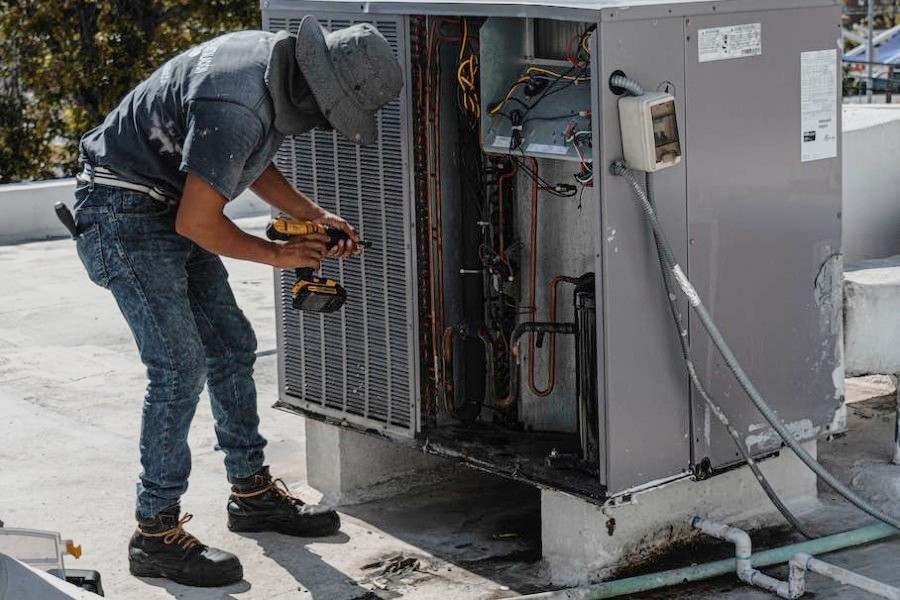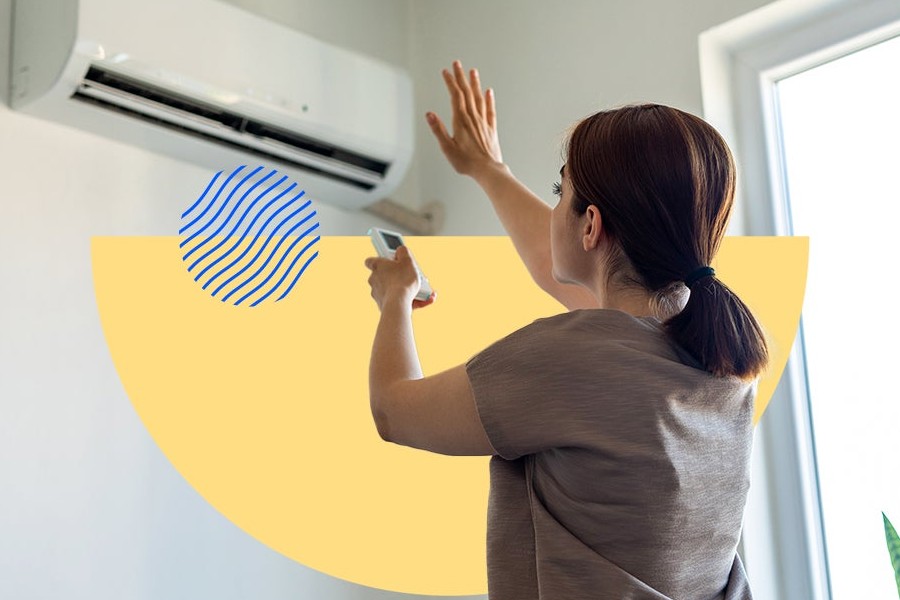
As we navigate through the varying climates and seasons, the comfort of our living and working spaces heavily depends on the effectiveness of our heating, dehumidifying, and cooling systems.
These pivotal components of modern building management not only ensure a pleasant environment but also contribute to the health and well-being of the occupants.
In this blog, we’ll explore six fundamental facts that everyone should know about these crucial systems, providing insights into how they work, why they are essential, and how to optimize their efficiency for your personal or professional space. Join us as we delve into the world of temperature and humidity control to better understand how to maintain the comfort and integrity of our environments.
Types of Heating Systems
When the chill of winter sets in, having a reliable heating system is paramount for comfort and safety. The team behind Construction Heaters Inc. says that there are several types of heating systems to consider, each with its own set of advantages and suitability for various environments. Furnaces, that use a blower to circulate warm air through ductwork, are commonly found in many homes and are typically powered by natural gas, electricity, or oil.
Boilers, on the other hand, heat water to produce steam or hot water for heating that is distributed via pipes to radiators or underfloor systems. For homes located in regions with mild winters, heat pumps offer an efficient solution by transferring heat from the outside air or ground into the home.
Lastly, there are electric space heaters and wood stoves, which can serve as supplemental heating sources for added warmth where needed. Each system has its unique installation requirements, cost implications, and energy efficiency profiles, making the choice a crucial factor in home and building management.
The Importance of Dehumidification
Maintaining an appropriate level of humidity is crucial for both comfort and health, particularly in certain climates where excess moisture is a common problem. High humidity levels in indoor environments can contribute to the growth of mold and mildew, which are not only damaging to the structure of buildings but also pose potential health risks to occupants.
A dehumidifier works by removing excess moisture from the air, preserving the integrity of building materials, protecting electronic equipment from humidity-related malfunctions, and creating a more comfortable and healthful living space. Furthermore, dehumidification can help to optimize the efficiency of air conditioning systems by reducing the cooling load, resulting in lower energy consumption and costs.
Choosing the Right Dehumidifier for Your Needs
When it comes to selecting a dehumidifier, it’s essential to consider the size of the space, the average humidity levels, and the specific use case. Residential dehumidifiers come in various capacities, usually measured in pints of moisture they can remove from the air within 24 hours. Smaller units are adequate for compact spaces or areas that experience occasional dampness, whereas larger units are necessary for more expansive or consistently moist environments.
For industrial or commercial applications, dehumidifiers with higher capacity and durability are required to withstand the demands of larger spaces and continuous use. Additional features such as built-in humidistats, continuous drainage options, and energy efficiency ratings also play a significant role in the decision-making process. By carefully assessing the specific needs, space characteristics, and budget, one can make an informed choice that will ensure optimal dehumidification performance and contribute to maintaining a healthy indoor environment.
Cooling Solutions: Air Conditioning Options
As the temperature rises during the warmer months, an effective cooling system is essential for comfort and productivity. Air conditioning options available in the market range from traditional central AC systems to innovative alternatives that suit varying needs and preferences.
Central air conditioners are widely utilized in both residential and commercial settings, where they work by circulating cool air through a system of supply and return ducts. For those seeking a more targeted approach, ductless mini-split systems offer the convenience of cooling specific rooms without the need for extensive ductwork.
Portable air conditioners and window units are excellent solutions for temporary cooling or for spaces where installing permanent systems is not feasible. Moreover, evaporative coolers, also known as swamp coolers, provide a cost-effective and environmentally friendly option, ideally suited for areas with low humidity.
Selecting the right air conditioning system involves considering factors such as the size of the space, energy efficiency, installation costs, and the local climate. By understanding these variables, individuals can choose an air conditioning solution that ensures maximum comfort and energy savings during the sultry summer months.
Energy Efficiency and Sustainability
In an era where environmental responsibility is paramount, energy efficiency and sustainability are at the forefront of selecting heating, dehumidifying, and cooling systems. Energy-efficient systems not only lower operational costs but also contribute to a significant reduction in carbon footprint, which is crucial for environmental conservation.
For heating systems, options such as geothermal heat pumps or solar-powered heaters are becoming increasingly popular due to their minimal environmental impact and long-term savings on energy bills. Energy recovery ventilators (ERVs) are another innovative solution that improves efficiency by recycling energy from exhaust air to precondition incoming fresh air.
Dehumidifiers and air conditioners now often come with Energy Star certification, indicating that they meet strict energy efficiency criteria set by the US Environmental Protection Agency. These models typically utilize less energy than conventional units, leading to lower electricity consumption and reduced greenhouse gas emissions.
When planning for sustainability, it’s also vital to consider the lifecycle of these systems—from manufacturing and operation to disposal—and the use of refrigerants that have low global warming potential (GWP). By prioritizing energy efficiency and sustainability in heating, dehumidifying, and cooling systems, consumers and businesses alike can not only enjoy a comfortable indoor climate but also support the imperative drive towards a more sustainable future.
Maintenance Tips for Longevity
Regular maintenance is the key to ensuring that heating, dehumidifying, and cooling systems operate effectively over the long term. For heating systems, it is crucial to replace filters regularly to maintain airflow and efficiency. Annual inspections by professionals can help identify issues before they become costly problems. With dehumidifiers, cleaning the coils and ensuring that the water collection system is functioning properly will prolong its service life.
Air conditioners require similar attention; their filters, coils, and fins need routine maintenance to function efficiently. For all systems, monitoring for strange noises or erratic behavior can be an early indicator of a need for repair. By following these preventative measures, you can extend the lifespan of your systems and improve their overall performance, while keeping energy costs in check.
In conclusion, heating, dehumidifying, and cooling solutions are essential components of modern living that require careful consideration and maintenance. By understanding the different types of systems available, their importance, and how to optimize their efficiency, individuals can create a comfortable and sustainable environment for themselves and those around them. With proper care and attention, these systems will continue to provide reliable temperature control for many years to come.
- How To Choose The Right Corporate Travel Management Provider For Your Business?
- How Having A Dog Can Enhance Your Overall Mental Health
- 10 Tips To Maximize Your Air Conditioner’s Efficiency
- New Gear For Fall On The Rise For You And Your Harlem Home
- NYIC Launches ‘New York Proud’ Public Art Campaign Celebrating Immigrant Stories Across NYC
Become a Harlem Insider!
By submitting this form, you are consenting to receive marketing emails from: Harlem World Magazine, 2521 1/2 west 42nd street, Los Angeles, CA, 90008, https://www.harlemworldmagazine.com. You can revoke your consent to receive emails at any time by using the SafeUnsubscribe® link, found at the bottom of every email. Emails are serviced by Constant Contact









